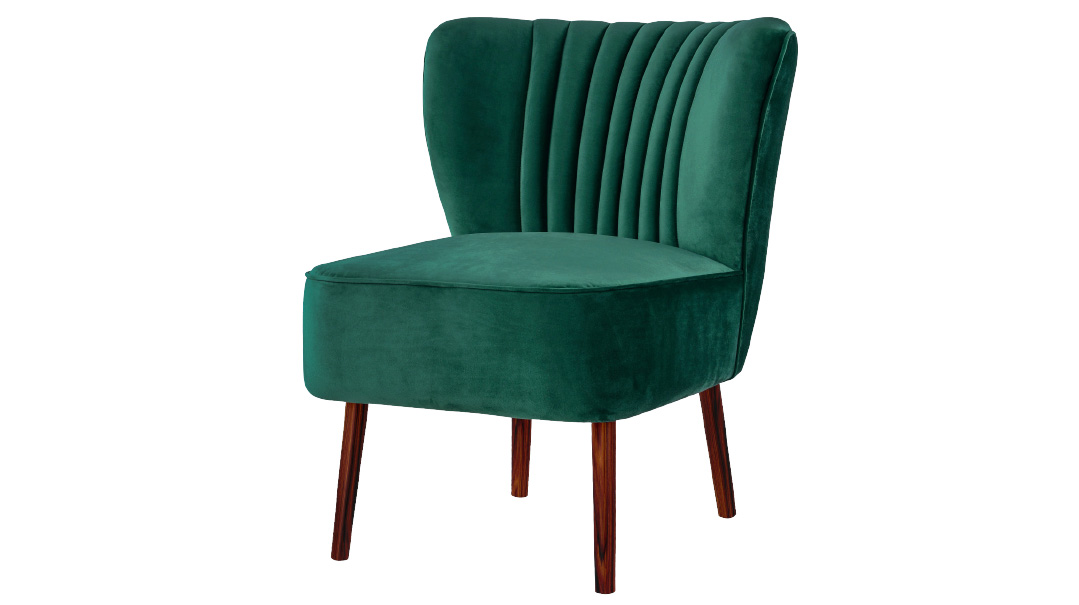Upholstery Check
| May 13, 2025How to choose fabrics for your home

W
hat would we do without comfy sofas and armchairs? They’re the center of the living room and a gentle cradle of life (often the single-cell variety), where backs go to rest and to-do lists go to die.
For tips on choosing high-quality upholstery, I spoke to Chaim of Chaim’s Upholstery, Richie of RP Modern Classic Interiors, and Avrumi Mossberg of Suede Custom Decor.
Online Shopping:
When examining online images, check that seams run straight. A row of seams on a part of the sofa that doesn’t get a lot of rubbing is an indication of higher quality. Look for excessive wrinkling on cushions, also an indicator of low quality. Note that a single extra-long sofa cushion may look sleek in images, but it will wrinkle over time.
Read the product specifications and see what material is used as filler. “The highest-grade upholstery has a core of metal springs or webbing and stuffing of wool and down feathers,” Richie says. Such pieces are expensive and long-lasting. They are often worth reupholstering rather than replacing. Memory foam is a good quality alternative that is not as expensive. Non-memory foam has a range of quality.
Reading product specs is not foolproof. “If the specs are true, then you can tell if the piece is good. But some sellers don’t tell the truth,” says Chaim. “We get customers who ordered from big-box stores, and we replace their low-quality foam and springs with new supports. Basically, we do what the seller should have done in the first place. It’s not worth buying cheap things.”
Outside materials that last longest include leather, tweed, and performance fabrics, which are water and steam resistant. Vinyl lasts long but is not a high-quality choice.
The seat of a sofa or an armchair is made of two parts: the cushion, which you sit on, and the horizontal support piece, which holds up the cushion. Richie recommends that sofa cushions be at least five inches thick and chair seat cushions at least three inches thick. The thicker the cushion, the comfier the seat will be. The horizontal support can be any thickness, but must have a leg at least every five feet (unless there is a platform base).
In-Person Shopping:
Trying out sofas and armchairs in person is superior to examining online options. (Stop hissing at your husband. I saw someone fall asleep in the Kneedler Fauchère showroom, so comparatively, his behavior is fine.)
When trying out sofas and chairs, ask:
Is the seat comfy or stiff? Do you sink in just enough, or so much that you need an industrial crane to get back up? Can you lean back comfortably?
When lowering yourself into the seat, do you need to bend your knees extra low? This question is especially important to tall people and anyone with mobility issues. Seat height can often be raised with semi-custom sofa leg risers.
Avrumi Mossberg explains how to feel the different types of foam within a sofa or armchair. “Usually, you can tell right away. Memory foam is soft, comfortable, and flattens itself when you stand. High density foam lasts longer, but doesn’t feel as soft. It softens over time. Softer foam doesn’t last as long, and it stays pressed down for a while. It doesn’t bounce up the same way as memory foam.”
Some Tips:
If an online product has very staged photos, you might be disappointed by the mundane reality of the furniture. A good piece doesn’t need to be photographed in a Roman villa, bathed in theater lighting, and airbrushed into another dimension.
If a fabric is listed as spill-proof or stain-proof, whip out that ketchup packet from your handbag and see for yourself. (Ask first. “I would let a client test my performance fabrics,” Avrumi Mossberg says.)
Most vinyl and performance fabrics have carcinogens, and hide products are treated with similarly hazardous chemicals. Buy with care and don’t opt for such fabrics for areas that have prolonged skin contact on surfaces.
A professional can pretreat upholstered furniture for stain resistance. Anyone can Scotchgard their own upholstery, but this is weaker protection. Carefully clean furniture before using Scotchgard, or every speck of dust will end up glued in place. Redo the process every few months.
Lift the seat cushion of a sofa or armchair. There is often an extra swatch of fabric there. This can be used to patch rips or to test out cleaning products. A piece can be snipped and carried to other stores to color-match throw pillows and accessories.
Loose seat cushions can be rotated with each other to ensure even wear and tear.
Nothing withstands constant abuse. If you trust-fall instead of sitting down like someone with… y’know, knees, then the armchair absolutely will wear out faster. I’m not telling you how to live — I’m telling you that your furniture will tell on you.
Zisi Naimark has over ten years experience as an interior designer and space planner, and has done projects all over the United States and Israel.
(Originally featured in Family First, Issue 943)
Oops! We could not locate your form.







